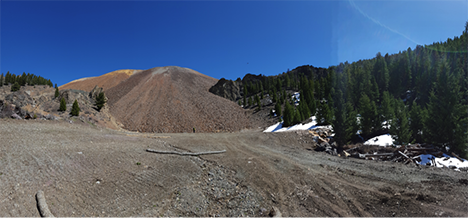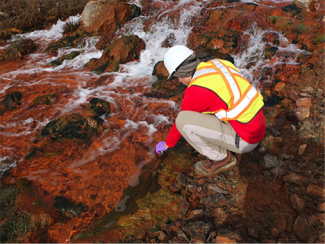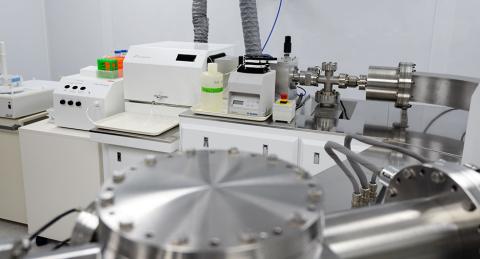By Elliott Skierszkan
Mining of ore deposits provides the raw materials used in the construction of vehicles, computer and telephone circuits, and buildings. As a result, mining has become a major contributor to the local and national economies. However, tremendous amounts of waste rock and mine tailings are generated by mining, which need to be carefully managed to avoid the contamination of water by toxic trace metals.

Mine waste dumps are often immense, filling valleys hundreds of metres in height, making it difficult to know exactly which chemical reactions control water quality with respect to trace metals. Rainfall and snowmelt percolate into these dumps and dissolve metal-bearing minerals. Subsequent reactions such as secondary mineral precipitation and metal adsorption can help reduce metal concentrations in effluent waters and improve water quality, but these reactions are poorly understood.

Recent improvements in multicollector ICP-mass spectrometry have shown that there are variations in metal stable isotope compositions as a result of these adsorption/precipitation reactions. This research project is taking advantage of our newfound ability to measure metal stable isotope ratios and to use the stable isotope signatures of trace metals as a tracer for their chemical behaviour in mine waste dumps. The study focuses on two metals—molybdenum and zinc—both of which can become toxic when present at elevated concentrations in water.

Ultimately, a better understanding of the chemical reactions that control metal release from mine waste dumps can lead to improved predictions of water quality in these dumps, and therefore lead to more cost-effective and environmentally protective management of mine wastes.
Further reading
Skierszkan, E.K., Mayer, K.U., Weis, D., and Beckie, R.D., 2016. Molybdenum and zinc stable isotope variation in mining waste rock drainage and waste rock at the Antamina mine, Peru. Science of The Total Environment, 550: 103–113.
Skierszkan, E.K., Amini, M. and Weis, D., 2015. A practical guide for the design and implementation of the double-spike technique for precise determination of molybdenum isotope compositions of environmental samples. Analytical and Bioanalytical Chemistry, 407: 1925–1935.